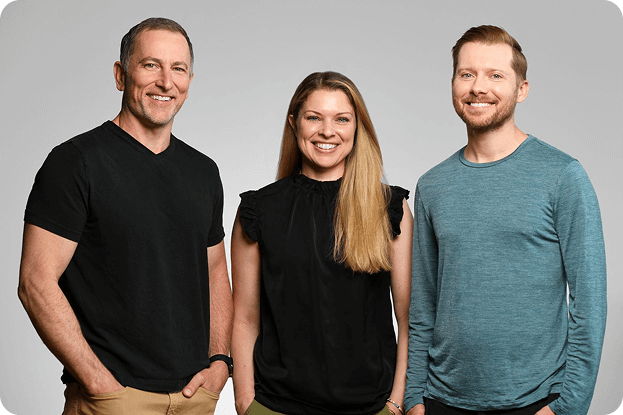Display – Rich Media (HTML5 Ads)
Overview:
This test measures overall account performance after implementing HTML5 assets across 2 campaigns in DV360. The purpose of this test is to understand whether using HTML5 assets will help improve overall performance in the areas of Site Visit Rate, Cost per Site Visit, Viewability and CTR.
Conclusion:
-
Incorporating HTML5 assets decreased overall Site Visit Rate by 17% and 35% respectively.
-
HTML5 assets increased Cost per Site Visit by 35-48% across both campaigns.
-
In Campaign 1, incorporating HTML5 increased CTR by 34%, however decreased CTR in Campaign 2 by 84%
-
Both HTML5 assets received significantly less impressions than static ads leading to an overall decrease in performance.
Final conclusion: Continue testing in different markets. Results are inconclusive.
Display – Retargeting Messaging
Overview:
This test measures overall account performance after implementing retargeting specific creatives across 1 campaign in DV360. The purpose of this test is to understand whether using retargeting messaging will improve overall performance in the areas of Site Visit Rate, Cost per Site Visit, Viewability, and CTR.

Conclusion:
-
Incorporating retargeting messaging increased overall Site Visit Rate by 766%. Results are somewhat skewed due to a larger majority of impressions served for the New Apartments messaging.
-
Retargeting messaging assets decreased Cost per Site Visit by 91%.
-
CTR increased by 171%, while viewability remained unchanged with less than 1% variance between both creatives.
Final conclusion: ROLL THIS OUT!
Paid Social – Site Visitor Retargeting
OVERVIEW:
Retargeting ad sets are created through the placement of a Facebook Pixel on your website. The Pixel will create an audience of your site visitors and ‘hold’ them in that audience for as long as you deem (usually we recommend anywhere between 90 – 180 days).
In this case study, we benchmark the Retargeting Ad Set in Awareness campaigns and examine the Retargeting performance in comparison to average total Awareness Campaign Performance, as well as our Standard, Look-A-Like, and El90 ad sets. Look-A-Like and EL90 audiences are more defined than our standard audience targeting, giving us a mid-low funnel comparison.
CONCLUSION:
The Site Visitor Retargeting ad set on average outperformed the Standard, Look-A-Like, and EL90 ad sets as well as the overall awareness campaign averages. The Retargeting ad set saw higher Link CTR’s, lower cost per landing page views, and increased site visit rates to a degree of statistical significance. It did however have a higher CPM across all comparisons and a lower Average Canvas View Time. That being said, both the Retargeting ad set Average CPM and Average Canvas View Time still fell well within Digible’s KPI standards. Additionally, because of the increased Site Visit Rate, we can safely assume that the Average Canvas View Time was lower due to users clicking to the site at a faster rate, and not due to an issue of targeting.
If looking for creative ways to drive site visits and increase link CTR on Facebook, adding a site visitor retargeting ad set is a great idea. That being said, it will be important to monitor CPM levels with this ad set and be cautious of implementation for clients with smaller budgets.

Paid Social – Youtube Skippable Ads
OVERVIEW:
Digible tested YouTube Skippable ads through our Display provider, DV360. YouTube ads are not new to Digible, but in running placements through Dv360, as opposed to Google Ads, Digible has the opportunity to experience more in-depth reporting and audience targeting.
YouTube Skippable Ads are at least 12 seconds long and recommended to be under 3 minutes total. They are defined by the fact that users have the ability to skip the ad after 5 seconds. YouTube Skippable ads also include a video overlay with the Property Logo and CTA as well as a companion Display Banner in the top right corner, which remains on-screen even if the user skips the ad.
In this case study, we benchmark YouTube Skippable Ads and examine performance compared to Display and Paid Social KPI’s.
CONCLUSION:
1. Compared to Display KPI’s YouTube Skippable Ad showed a 50% smaller Site Visit rate as well as a 57% increase in average CPM. That being said, one could argue the traffic and quality of site visits is higher through YouTube Skippable Ads because all placements are on YouTube, as opposed to Display, where placements are across multiple sites and apps. It is also important to note that Digible pays for YouTube Skippable Ads on a cost per view basis, as opposed to on CPM like Display.

2. Compared to Paid Social video ads, YouTube Skippable Ads demonstrated to be a much better platform for video creative. With significant differences in video views to 50% and 100%, as well as cost per view, video ads through YouTube Skippable ads outperformed video ads through Paid Social in key KPI’s. That being said, it is important to note that there are metrics we cannot compare here, such as leads and Cost Per Link Clicks.

3. Utilizing YouTube Skippable Ads in your media mix is a great way to capitalize on video creative while ensuring quality view metrics.








